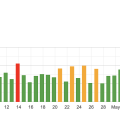What Is A 301 Redirect? When navigating the intricate world of website management and SEO, you may often hear the term “301 redirect.” This tool is crucial for preserving the SEO value of your content when you need to permanently move a webpage to a new URL. A 301 redirect signals to search engines that the page has been moved for good, ensuring that any existing backlinks or search engine rankings are transferred to the new location. Essentially, it helps you maintain your website’s authority and rankings while seamlessly guiding visitors to the correct page. Have you ever tried to visit a website only to be redirected to a different page? If so, you’ve likely encountered a 301 redirect without even knowing it. These redirects play a crucial role in maintaining the health of the Internet, ensuring users, and search engines end up where they need to be. But what exactly is a 301 redirect, and why should you care? Let’s dive into the world of 301 redirects and uncover everything you need to know.

What Is A 301 Redirect?
A 301 redirect is a permanent redirect from one URL to another. It tells web browsers and search engines that a page has been moved permanently, and they should update their indexes to reflect this change. When done correctly, users and search engines won’t even notice the redirect. Instead, they will seamlessly be taken from the old URL to the new one.
How Do 301 Redirects Work?
You might be curious about the mechanics behind a 301 redirect. When a web server receives a request for a page that has been moved, it issues a 301 status code along with the new location of the requested resource. The browser then makes a new request to the provided URL, and voila, the page loads as intended. Here’s a breakdown:
| Step | Action |
|---|---|
| Step 1 | Browser requests old URL |
| Step 2 | Server responds with 301 status and new URL |
| Step 3 | Browser requests new URL |
| Step 4 | New page loads |
It’s like giving someone your new address after you’ve moved houses—efficient and painless, if done right.
Why Should You Use a 301 Redirect?
So, why is it important to use a 301 redirect? Well, there are several reasons:
- SEO Benefits: Search engines will transfer the ranking power from the old URL to the new one, helping you maintain your search engine rankings.
- User Experience: It prevents broken links and enhances user experience by ensuring visitors land on the correct page.
- Link Equity: Also known as “link juice,” 301 redirects ensure that any backlinks pointing to the old URL pass their value to the new one.
- Domain Changes: If you ever change your domain name, 301 redirects are essential to guide users to your new site.
How to Implement a 301 Redirect
The way you implement a 301 redirect depends on the server you’re using and whether you have access to your server’s configuration files. Here are a few common methods:
Using .htaccess File (Apache Servers)
If your website runs on an Apache server, you can add 301 redirects through the .htaccess file. This file should exist in the root directory of your website. Here’s an example of what the code might look like:
Redirect 301 /old-page.html http://www.yoursite.com/new-page.html
This line of code tells the server to redirect the “old-page.html” to the new URL.
Nginx Configuration
If you’re using Nginx, you’ll need to modify the server configuration file. Here’s an example:
server { listen 80; server_name yoursite.com;
location /old-page { return 301 http://www.yoursite.com/new-page; } }
WordPress Plugins
For those who prefer not to fiddle with server files, WordPress plugins offer a user-friendly way to manage redirects. Plugins like “Redirection” and “Yoast SEO” make it easy to set up 301 redirects directly from your WordPress dashboard.
Common Scenarios for Using a 301 Redirect
Okay, so we’ve covered what a 301 redirect is and how to implement it. But when should you use one? Here are some common scenarios:
Changing URL Structure
If you decide to change your website’s URL structure for SEO or organizational purposes, 301 redirects can guide users and search engines from the old URLs to the new ones.
Merging Content
Suppose you have two pages with very similar content and decide to merge them into one comprehensive page. A 301 redirect can send visitors and search engines to the new, merged page.
Rebranding or Domain Change
Rebranding often involves changing your domain name. By setting up 301 redirects from your old domain to your new one, you ensure that your website retains its search rankings and that visitors can find you easily.
Fixing 404 Errors
404 errors occur when a page is not found. These errors can frustrate users and harm your SEO. Instead of letting users hit a dead end, use a 301 redirect to guide them to a relevant page.
SEO Implications of 301 Redirects
Alright, let’s talk about everyone’s favorite topic—SEO. Understanding how 301 redirects affect your SEO is crucial:
Preserves Link Equity
When you set up a 301 redirect, most of the link equity from the old URL is passed on to the new URL. This is critical for maintaining your search engine rankings.
Indexing by Search Engines
Search engines like Google will index the new URL and drop the old one from their index, ensuring your site remains up-to-date in search results.
User Experience
A well-implemented 301 redirect enhances user experience by ensuring they land on the right page, reducing the likelihood of them leaving your site due to frustration.

Pitfalls to Avoid When Using 301 Redirects
While 301 redirects are incredibly useful, they can be misused. Here are some common mistakes to watch out for:
Chain Redirects
A chain redirect occurs when one URL redirects to another, which then redirects to yet another. This can slow down your website and confuse search engines. Always aim for a direct redirect.
Too Many Redirects
Similarly, having too many redirects can slow down your site and affect its performance. Keep your redirects simple and necessary.
Ignoring Mobile and Desktop Versions
Ensure that 301 redirects work seamlessly across both mobile and desktop versions of your site. A faulty redirect on mobile can lead to a poor user experience.
Tools for Managing 301 Redirects
Managing redirects might seem like a daunting task, but several tools can make it easier:
Google Search Console
Google Search Console is an excellent free tool for tracking your redirects and ensuring they are set up correctly.
Screaming Frog SEO Spider
This tool can crawl your site and help you identify any URL issues, including problematic redirects.
Redirection Plugin for WordPress
If you’re using WordPress, the Redirection plugin offers an intuitive way to manage your redirects right from the dashboard.

Testing Your 301 Redirects
Once you’ve set up your 301 redirects, it’s essential to test them to ensure they work correctly. Here are some steps you can take:
Manual Testing
Manually enter the old URL into your browser and verify that it redirects to the new one.
Use Online Tools
Several online tools can help you test your redirects. Simply enter the old URL and see if it takes you to the new one.
Browser Developer Tools
Most modern browsers come with developer tools that allow you to view the HTTP status code and verify that a 301 redirect is occurring.
The Future of 301 Redirects
As the web continues to evolve, so too will the ways we manage and implement redirects. Here are some trends to keep an eye on:
HTTP/3 and QUIC
With the advent of HTTP/3 and the QUIC protocol, web pages will load faster, affecting how we implement and experience redirects. As these new protocols become more widespread, the process of setting up and managing redirects will likely become even more efficient.
Voice Search
With the increasing popularity of voice search, ensuring that your redirects are up-to-date and efficient is more important than ever. Voice search queries often lead to content that is most relevant and immediately accessible, making efficient redirects key to maintaining your SEO efforts.
Mobile-First Indexing
Google has already shifted to mobile-first indexing, meaning it primarily uses the mobile version of the content for indexing and ranking. This shift underscores the importance of ensuring that your 301 redirects work perfectly on mobile devices.
Conclusion
301 redirects are a vital tool in any website administrator’s toolkit. They help preserve SEO value, ensure a smooth user experience, and are essential for tasks like domain changes, URL restructuring, and fixing 404 errors. By understanding what a 301 redirect is and how to implement it properly, you can ensure that your website remains robust, user-friendly, and SEO optimized.
If you haven’t already, now is a great time to audit your site for any broken links or outdated URLs and implement 301 redirects where necessary. Your users, and search engines, will thank you. So, the next time someone asks, “What is a 301 redirect?” you’ll not only know the answer—you’ll be able to explain it in detail and put that knowledge into practice.











